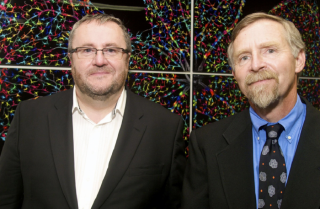How do neurons become neurons? They all begin as stem cells, undifferentiated and with the potential to become any cell in the body. Until now, however, exactly how that happens has been somewhat of a scientific mystery. New research conducted by UC Santa Barbara neuroscientists has deciphered some of the earliest changes that occur before stems cells transform into neurons and other cell types. Working with human embryonic stems cells in petri dishes, postdoctoral fellow Jiwon Jang discovered a new pathway that plays a key role in cell differentiation. The findings appear in the journal Cell.
Contact
- Voice: (805) 893-5320
- Email: info@stemcell.ucsb.edu
Address
Neuroscience Research Institute
University of California, Santa Barbara
Santa Barbara, CA 93106-9610





